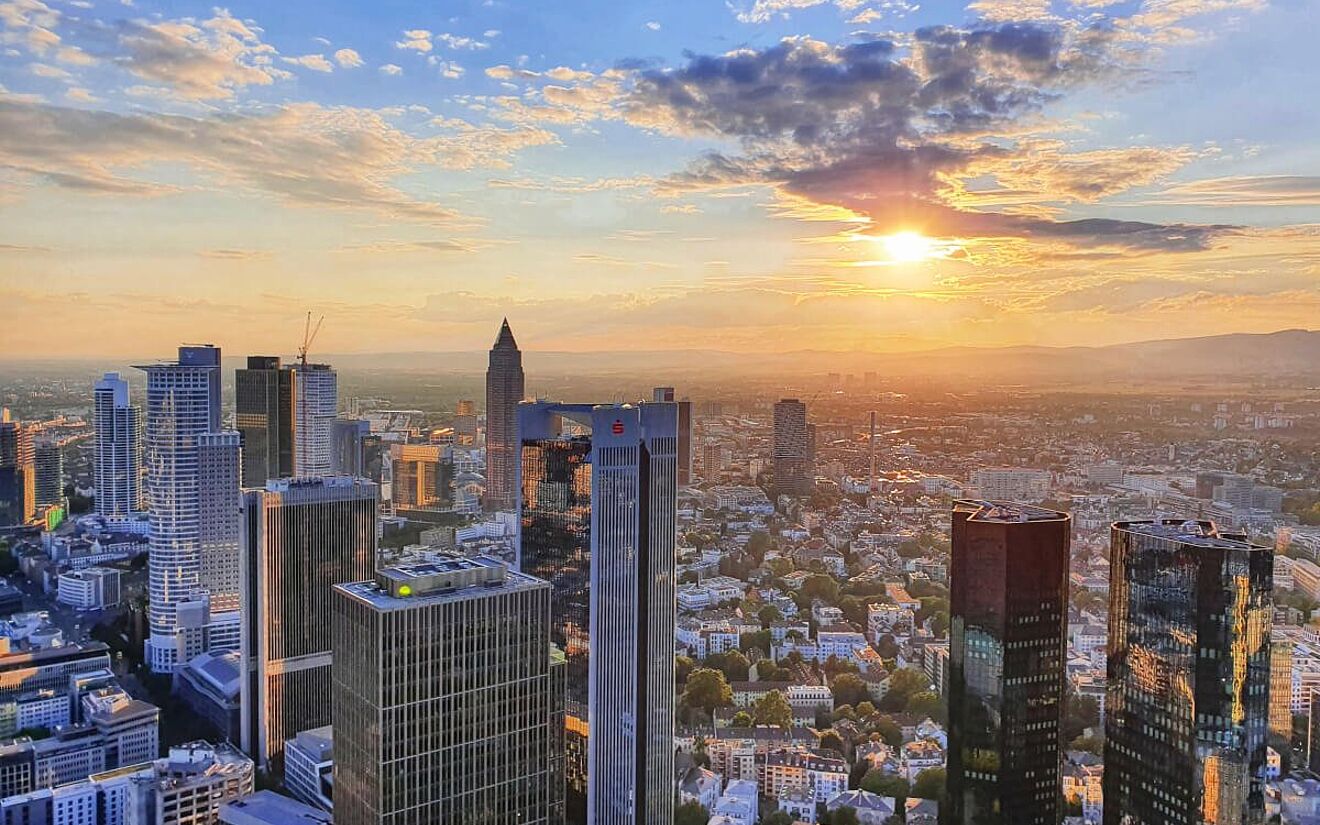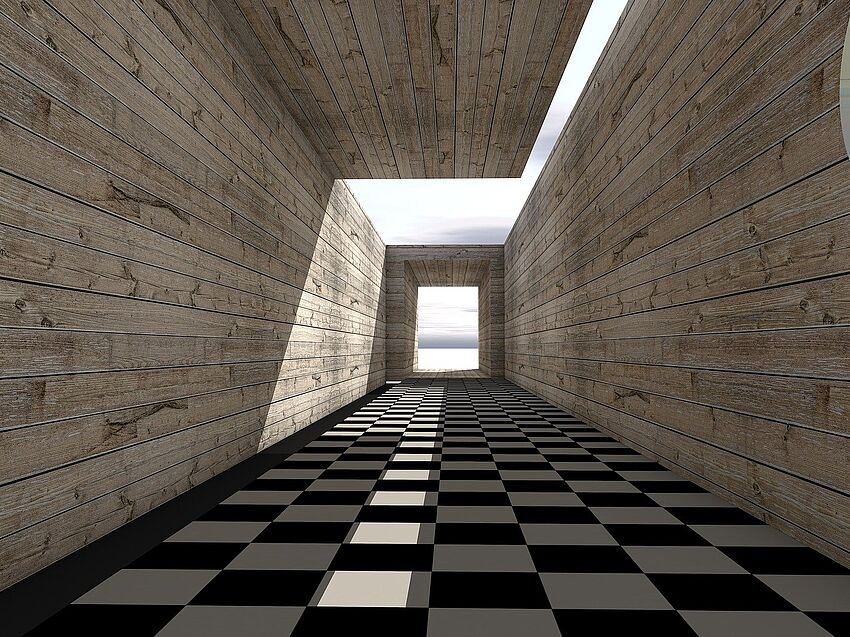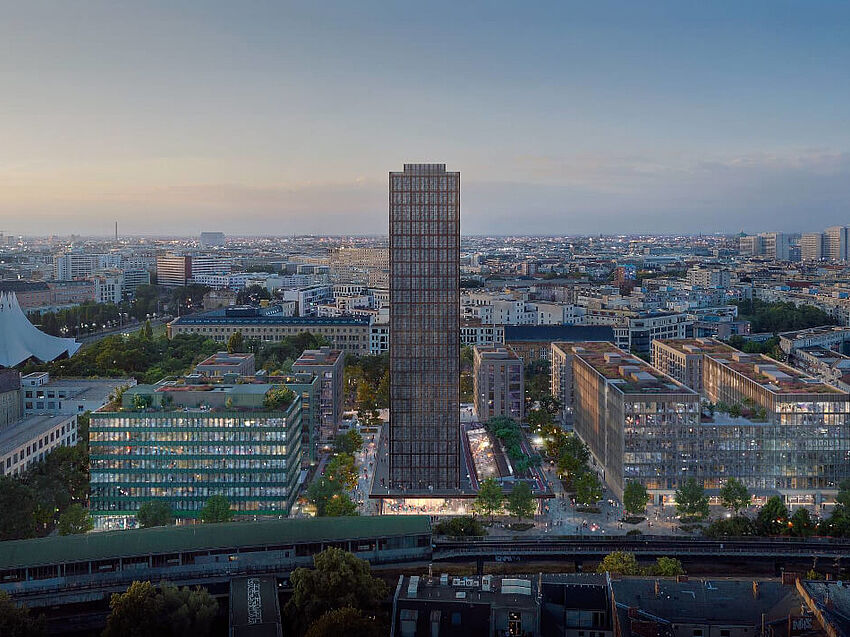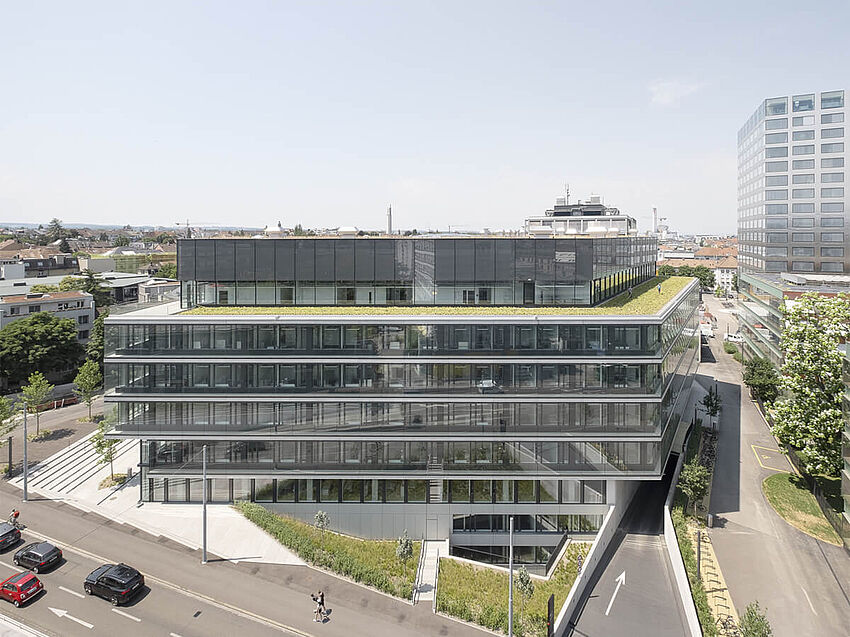Carbon concrete: building material of the future for sustainable construction
Hardly any other construction project is as publicly visible for the technical, design, and economic aspirations of a city as a skyscraper. The question of what is the tallest building in Germany draws attention to those structures that set standards in urban space—functionally, structurally, and formally.
It comes as no surprise that Frankfurt am Main dominates this list: the Main metropolis is home to all five buildings on this list and 20 of the 22 skyscrapers in Germany with a structural height of over 150 meters. The only exceptions are the Post Tower in Bonn and the Estrel Tower in Berlin.
The following overview shows the five tallest skyscrapers in Germany – measured by their structural height, i.e., up to the architectural top, without antennas or technical superstructures. It reveals how the vertical city defines itself today and where it reaches its limits in terms of architecture and construction.
1st place: Commerzbank Tower
With a structural height of 259 meters, the Commerzbank Tower in Frankfurt am Main is currently the tallest building in Germany. The skyscraper was built in 1997 according to plans by Norman Foster and is considered a milestone in sustainable high-rise architecture. The building has a triangular floor plan, with 62 above-ground floors and a central, naturally ventilated atrium.
Its design set early standards in energy-efficient high-rise construction – through the combination of open winter gardens, natural lighting, and a ventilated core, among other features. These principles were later further developed and adopted in many other buildings.
Including the antenna, the Commerzbank Tower reaches a total height of 300 meters, which means it could also be considered the tallest building in Germany, technically. Until 2012, it was the tallest building in Europe. Since Brexit, it is once again considered the tallest skyscraper within the EU.
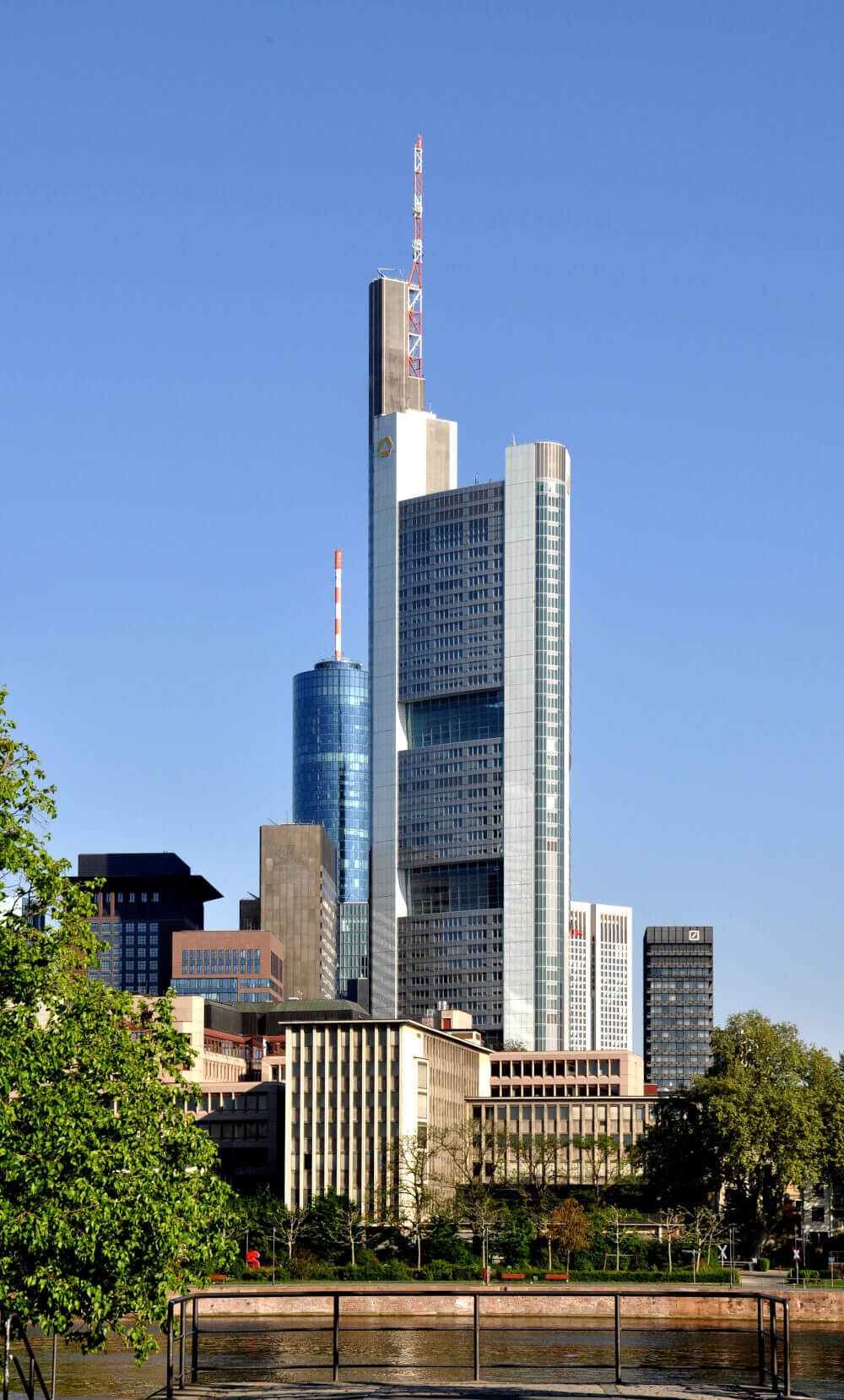
2nd place: Messeturm
Just behind the Commerzbank Tower, the Messeturm ranks as Germany's second-tallest skyscraper. The office tower measures 256.5 meters and has dominated Frankfurt's western skyline since 1990. Designed by Helmut Jahn, the tower's overall appearance is reminiscent of the iconic skyscrapers of 1920s and 1930s New York. However, despite this resemblance, it is a postmodern building: its structure, proportions, and materials are developed from a combination of cubes, a cylindrical shaft, and the iconic pyramid as the structural pinnacle.
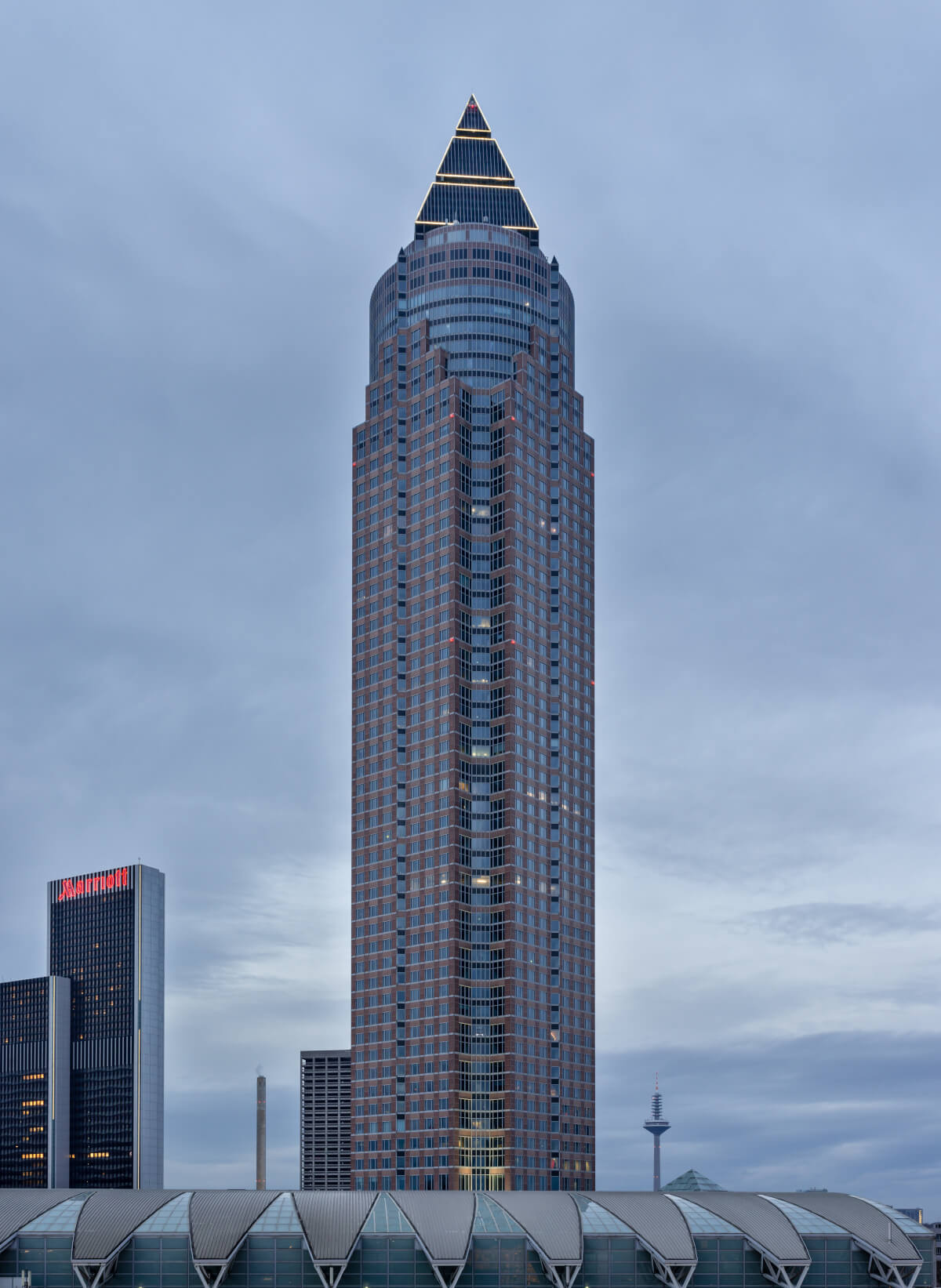
3rd place: FOUR Tower 1
Since its shell was completed in 2024, the 233-meter-high FOUR Tower 1 has been one of the tallest buildings in Germany. The building is currently undergoing interior work and is expected to be completed in 2025.
The tower was designed by the Amsterdam-based firm, UNStudio. It is the tallest building in the FOUR Frankfurt project, an inner-city high-rise district on the site of the former Deutsche Bank premises. Tower 1 is designed purely as an office high-rise and will offer the highest office floor in Germany.
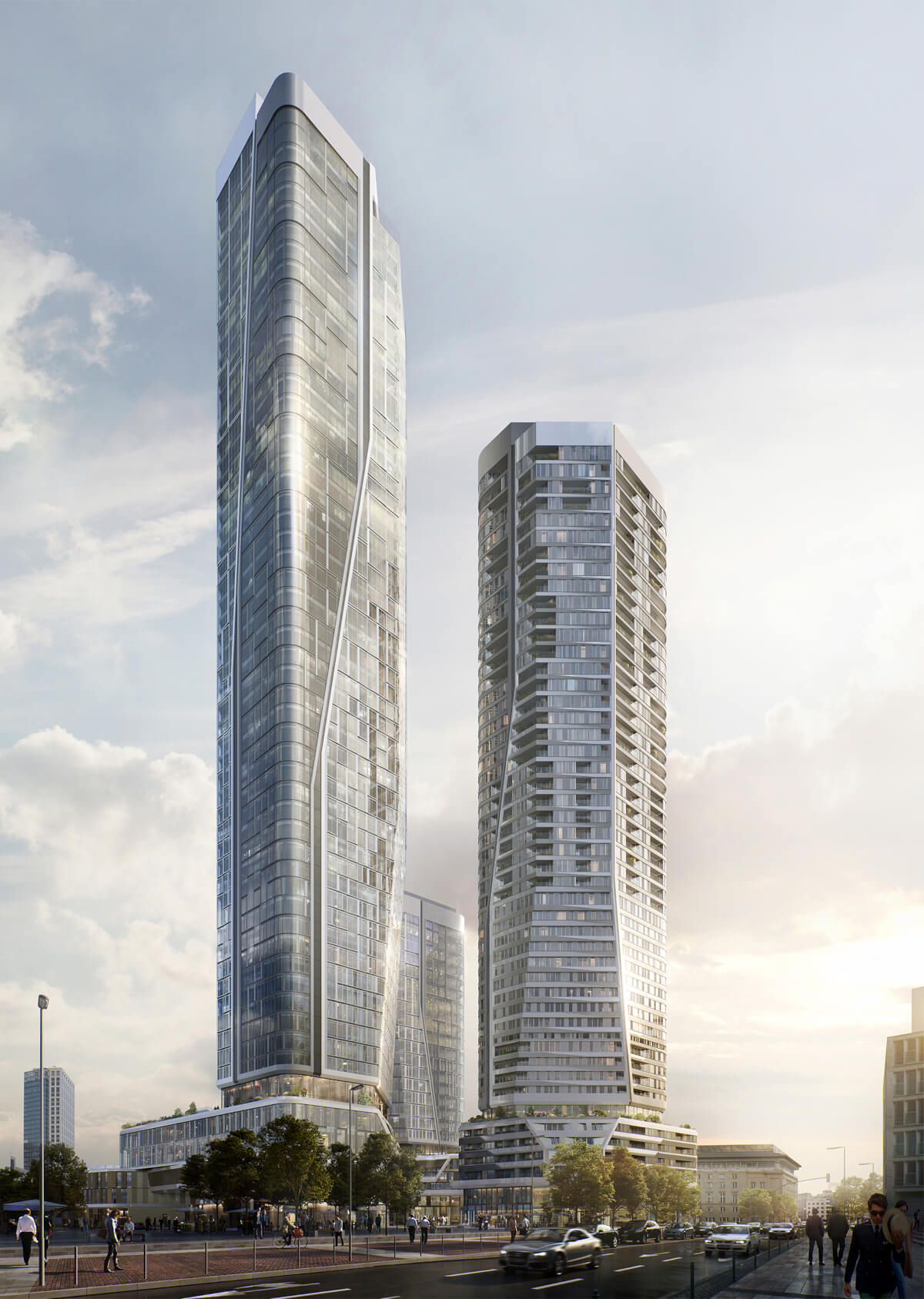
4th place: Westendstraße 1
The Westendstraße 1 skyscraper was completed in 1993 and, at 208 meters high, is one of the defining buildings of the Frankfurt skyline. Compared to the taller towers, it is noticeably lower, but has maintained a firm place among Germany's tallest skyscrapers for decades.
The building is notable for its sculptural, vertically structured form. Particularly striking is the wreath-like steel structure at the top, which gives the tower an unmistakable silhouette that is often likened to a stylized crown. Like many skyscrapers in Frankfurt's banking district, this one is also used primarily by a financial institution; DZ Bank has its headquarters here.
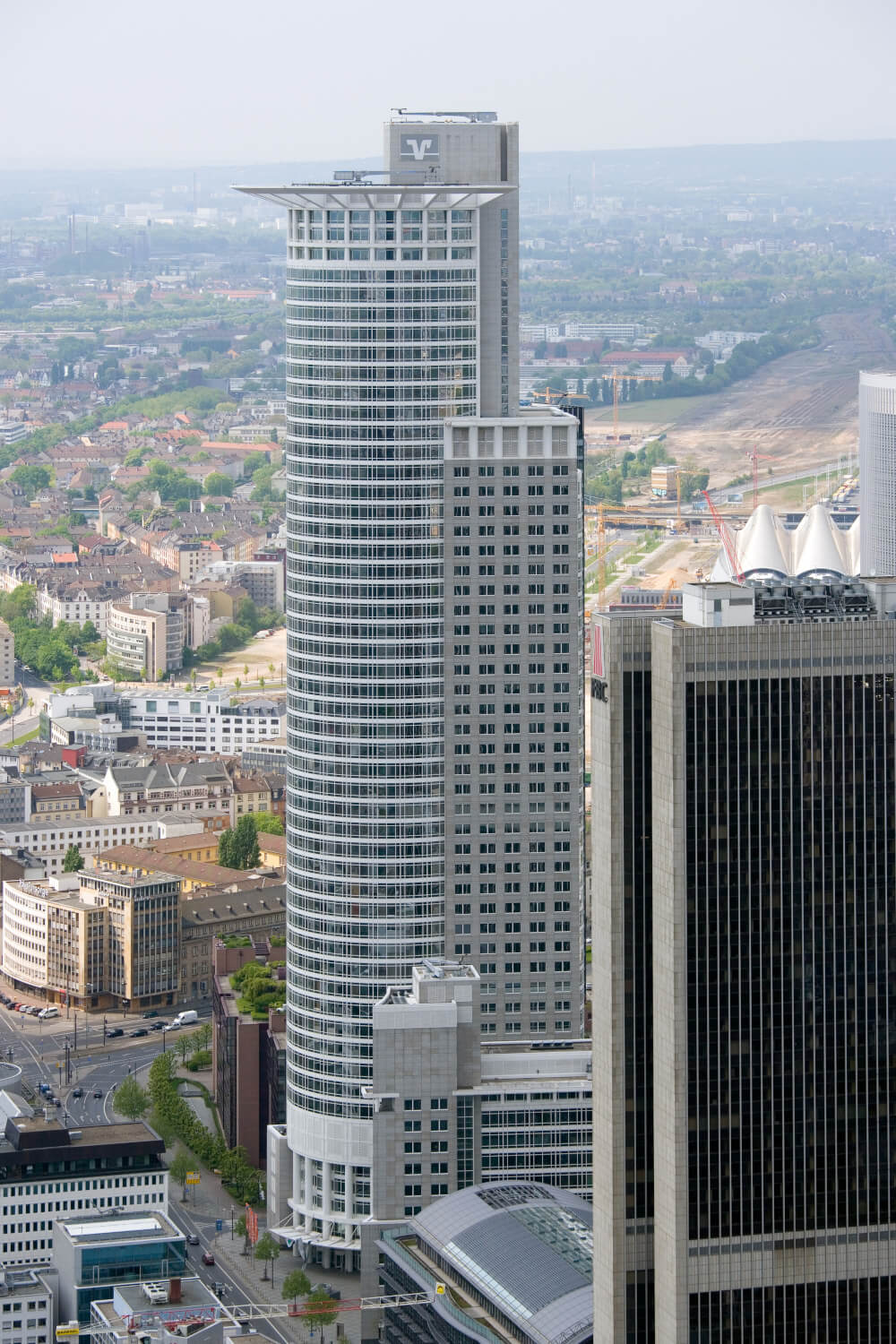
5th place: Main Tower and Tower 185
Two buildings share fifth place in the ranking: both are exactly 200 meters high, but differ significantly in terms of when they were built, their design, and their use.
Main Tower
Opened in 1999, the Main Tower was designed by the Frankfurt-based firm Schweger + Partner and was the first fully glazed skyscraper in Europe at the time. Two structures, a round tower and a rectangular annex, together form the ensemble. A special feature is the publicly accessible viewing platform on the top floor, which offers an unobstructed view of the city. The main user is Landesbank Hessen-Thüringen (Helaba).
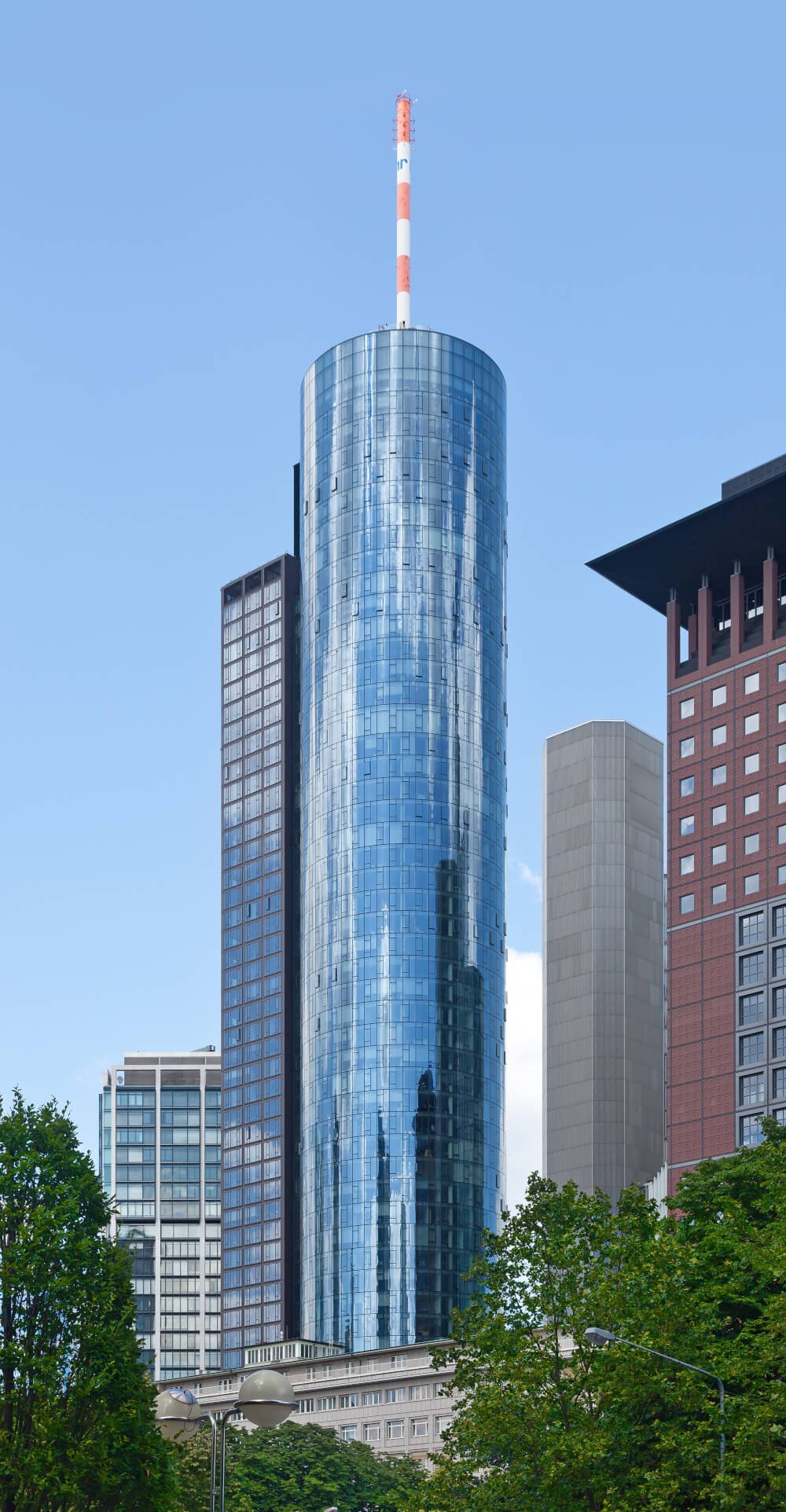
Tower 185
Tower 185 is significantly newer, having been completed in 2011 based on plans by Christoph Mäckler. The name refers to the originally planned height – however, during the course of the project development, the building was extended to 200 meters. The tower is located in the immediate vicinity of the Frankfurt Trade Fair and marks the eastern entrance to the Europaviertel district. The main tenant is PricewaterhouseCoopers (PwC), which operates its German headquarters here.
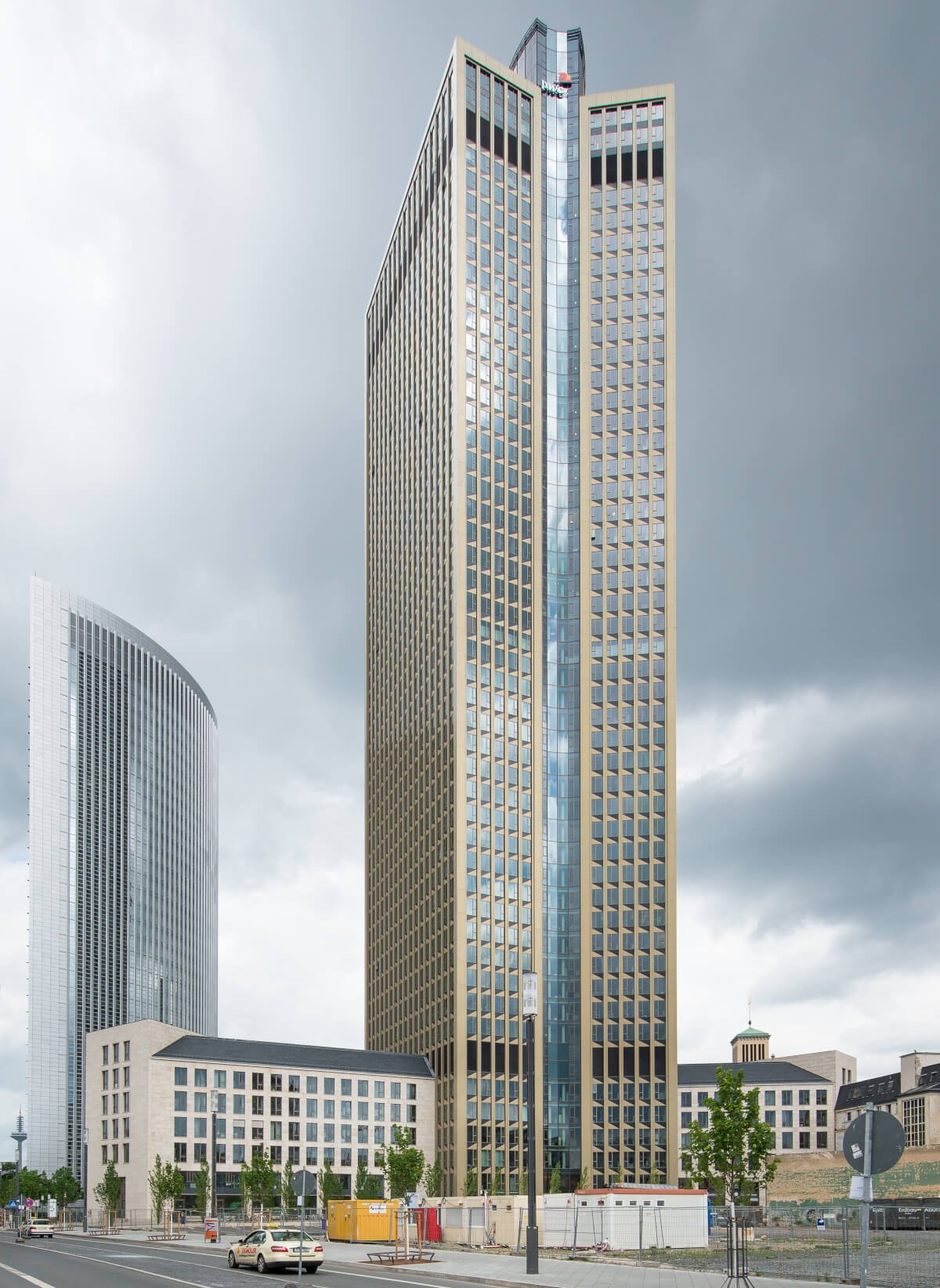
Conclusion: The race for Germany's tallest building continues
Germany's tallest skyscrapers are currently all located in Frankfurt am Main, underscoring the city's unique role as a center of high-rise development in this country. The rankings reflect different architectural eras: from the postmodern Messeturm to the FOUR Tower 1, currently under construction, which represents a new generation of urban-integrated skyscraper projects.
This list will continue to change in the future – or it will, if the announced projects are actually realized. The Millennium Tower in Frankfurt, with a planned height of 288 meters, would be the tallest building in Germany once completed. However, the project is currently on hold and a new schedule has not yet been published. The Elbtower in Hamburg is also at a standstill. Following the construction freeze due to the insolvency of the developer Signa, work cannot resume until March 2026 at the earliest, partly due to geotechnical problems in the surrounding area.
Whether these projects will actually be completed remains unclear at present. One thing is certain, however: high-rise construction in Germany remains a dynamic field – both architecturally and economically. And the race for the title of Germany's tallest building is far from over.
